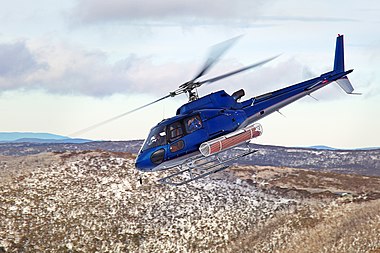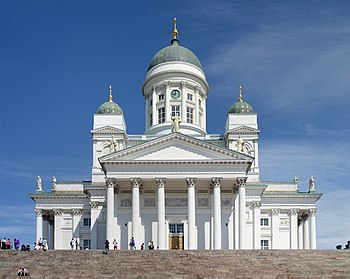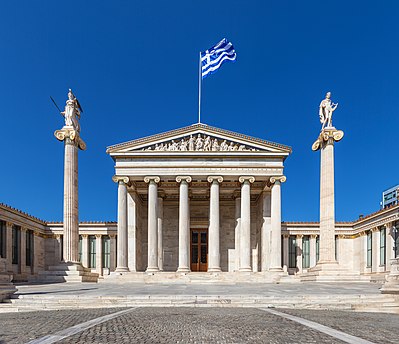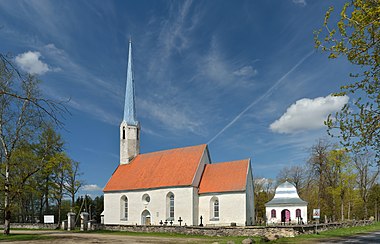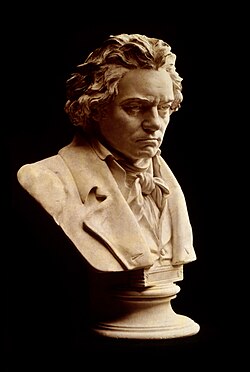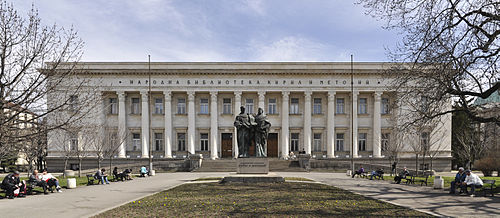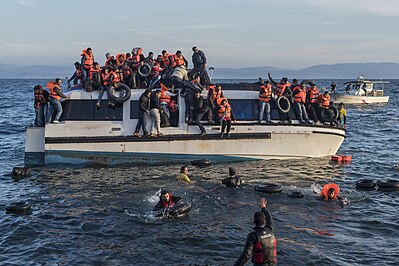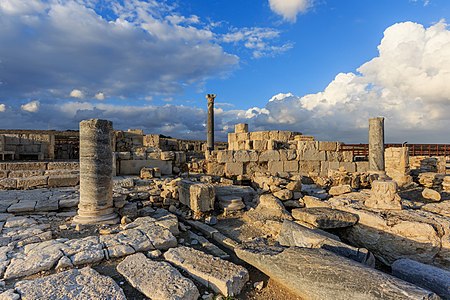Selected picture
Portal:European Union/Selected picture/1

Europa and the bull as seen in Nova et accurata totius Europæ descriptio by Fredericus de Wit (1700).
Portal:European Union/Selected picture/2
Portal:European Union/Selected picture/3
Portal:European Union/Selected picture/4
Portal:European Union/Selected picture/5
Portal:European Union/Selected picture/6
Portal:European Union/Selected picture/7

Photo credit: User:Immanuel Giel
The European Coal and Steel Community was founded in 1951 to pool the steel and coal resources of its member-states, thus preventing another European war.
Portal:European Union/Selected picture/8
Portal:European Union/Selected picture/9
Portal:European Union/Selected picture/10
Portal:European Union/Selected picture/11
Portal:European Union/Selected picture/12
Portal:European Union/Selected picture/13
Portal:European Union/Selected picture/14
Portal:European Union/Selected picture/15
Portal:European Union/Selected picture/16
Portal:European Union/Selected picture/17
Portal:European Union/Selected picture/18
Portal:European Union/Selected picture/19
Portal:European Union/Selected picture/20
Portal:European Union/Selected picture/21
Portal:European Union/Selected picture/22
Portal:European Union/Selected picture/23
Portal:European Union/Selected picture/24
Portal:European Union/Selected picture/25
Portal:European Union/Selected picture/26
Portal:European Union/Selected picture/27
Portal:European Union/Selected picture/28
Portal:European Union/Selected picture/29
Portal:European Union/Selected picture/30
Portal:European Union/Selected picture/31
Portal:European Union/Selected picture/32
Portal:European Union/Selected picture/33
Portal:European Union/Selected picture/34
Portal:European Union/Selected picture/35
Portal:European Union/Selected picture/36
Portal:European Union/Selected picture/37
Portal:European Union/Selected picture/38
Portal:European Union/Selected picture/39
Portal:European Union/Selected picture/40
Portal:European Union/Selected picture/41
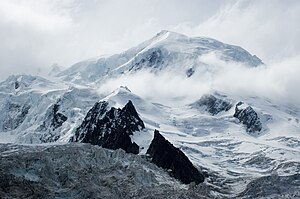
Portal:European Union/Selected picture/42
Portal:European Union/Selected picture/43
Portal:European Union/Selected picture/44
Portal:European Union/Selected picture/45
Portal:European Union/Selected picture/46
Portal:European Union/Selected picture/46
Portal:European Union/Selected picture/47
Portal:European Union/Selected picture/47
Portal:European Union/Selected picture/48
Portal:European Union/Selected picture/48
Portal:European Union/Selected picture/49
Portal:European Union/Selected picture/49
Portal:European Union/Selected picture/50
Portal:European Union/Selected picture/50

Europa and the bull as seen in Nova et accurata totius Europæ descriptio by Fredericus de Wit (1700).
Portal:European Union/Selected picture/2
Map credit: Olaus Magnus
The carta marina is the earliest detailed map of the Nordic countries. It took twelve years to finish and the first copies were printed in 1539 in Venice. Its existence had long been considered apocryphal, until a copy was discovered in Munich in 1886. The map is divided in 3×3 sheets with the dimension 55x40 cm (22x16 in), each made from a separate woodcut block. Historia de gentibus septentrionalibus (Rome, 1555) is a much larger commentary on the map.
Portal:European Union/Selected picture/3
Photo credit: Benh Lieu Song
The Arc de Triomphe at night. Commissioned by Napoleon after the victory in the Battle of Austerlitz, it stands in the middle of the Place Charles de Gaulle, at the western end of the Champs-Élysées. At 51 metres (167 ft) high and 45 m (148 ft) wide, it is the second-largest triumphal arch in the world. The monument honors soldiers throughout French history, and houses the tomb of the unknown soldier.
Portal:European Union/Selected picture/4
The euro sign (€) is the currency symbol used for the euro, the official currency of the eurozone and a few other European countries. The design was presented to the public by the European Commission on 12 December 1996, and consists of a stylized letter E (or epsilon) crossed by two lines instead of one. While the Commission intended the euro sign to be a prescribed glyph, type designers made it clear that they intended instead to adapt the design to be consistent with the typefaces to which the symbol was to be added. Euro banknotes and coins entered into circulation on 1 January 2002, making it the day-to-day operating currency of its original members. This diagram shows the construction of the euro sign as formally specified by the European Commission.
Portal:European Union/Selected picture/5
Map credit: Robert Wilkinson
An 18th century map of the Iberian Peninsula illustrating various topographic features of the land. The Iberian Peninsula, or Iberia, is located in the extreme southwest of Europe, and includes modern day Spain, Portugal, Gibraltar and Andorra.
Portal:European Union/Selected picture/6
Photo: Benjamint444
The Eurocopter AS350 (AStar in North America) is a single-engined light helicopter originally manufactured by Aérospatiale (now part of Eurocopter Group). It is a popular model, being used worldwide in many civilian, law enforcement, and military organisations. One variant became the first helicopter ever to land on Mount Everest.
Portal:European Union/Selected picture/7

Photo credit: User:Immanuel Giel
The European Coal and Steel Community was founded in 1951 to pool the steel and coal resources of its member-states, thus preventing another European war.
Portal:European Union/Selected picture/8
Photograph credit: Joaquim Alves Gaspar
Helsinki Cathedral is an Evangelical Lutheran cathedral of the Diocese of Helsinki, located in the centre of Helsinki, Finland. Designed by Carl Ludvig Engel to form the focal point of Senate Square, it was built from 1830 to 1852 in the Neoclassical style. The church's plan forms a Greek cross (a square centre and four equilateral arms), symmetrical in each of the four cardinal directions. The cathedral is one of the most popular tourist attractions in Helsinki, with more than half a million visitors in 2018.
Portal:European Union/Selected picture/9
Photograph credit: Thomas Wolf
The Academy of Athens is Greece's national academy and the highest research establishment in the country. Established on 18 March 1926, it operates under the supervision of the Ministry of Education and Religious Affairs.
This picture shows the main building of the Academy, a neoclassical building between Panepistimiou Street and Akadimias Street in the centre of Athens and one of the city's major landmarks. The building was designed as part of an architectural "trilogy" in 1859 by Danish architect Theophil Hansen, along with the University and the National Library. The Greek neoclassical sculptor Leonidas Drosis sculpted the principal multi-figure pediment sculpture, on the theme of the birth of Athena, based on a design by painter Carl Rahl. Two columns on either side of the portico feature statues of Athena on the left and Apollo on the right, also designed by Drosis.
Portal:European Union/Selected picture/10
Painting: František Kupka
The Cathedral is an abstract oil painting on canvas created by Czech artist František Kupka in 1912–1913. Measuring 180 by 150 centimetres (71 in × 59 in), the painting is held by the Museum Kampa in Prague, Czech Republic. In this painting, vertical lines running the entire length of the canvas are intersected by diagonal lines to form rectilinear shapes of various sizes and colors.
Portal:European Union/Selected picture/11
Photograph credit: Diego Delso
This is a panoramic view of the interior of the Pula Arena, a Roman amphitheatre in Pula, Croatia. Constructed between 27 BC and AD 86, it is among the six largest surviving Roman arenas in the world, and is the best-preserved ancient monument in the country. The amphitheatre appears on the Croatian ten-kuna banknote.
Portal:European Union/Selected picture/12
Photograph credit: Vladimír Ruček
Lietava Castle is an extensive ruined castle in the Súľov Mountains of northern Slovakia. It was built some time in the 13th century, most likely as an administrative and military centre. It occupies a strategic position alongside the Amber Road, a trade route along which amber and other goods were transported southwards from the Baltic Sea. Originally a four-storey tower, it was expanded and reconstructed under a succession of owners, before being abandoned in the seventeenth century. The ruins contain handsome fireplaces, wall inscriptions, coats of arms, and renaissance portals, which attest to its previous grandeur.
Portal:European Union/Selected picture/13
Photograph: Ivar Leidus
Väike-Maarja Church is located at Väike-Maarja in Lääne-Viru County, Estonia. Initially designed as a fortress church, construction began in the 14th century. It has three nave-halls in Gothic style, as well as an organ installed by Gustav Normann and stained-glass windows by Riho Hütt. The original spire collapsed in a 2010 storm, being replaced in 2012.
Portal:European Union/Selected picture/14
Photo: W. J. Mayer; Restoration: Lise Broer
A bust of the German composer and pianist Ludwig van Beethoven (1770–1827), made from his death mask. He was a crucial figure in the transitional period between the Classical and Romantic eras in Western classical music, and remains one of the most acclaimed and influential composers of all time. Born in Bonn, of the Electorate of Cologne and a part of the Holy Roman Empire of the German Nation in present-day Germany, he moved to Vienna in his early twenties and settled there, studying with Joseph Haydn and quickly gaining a reputation as a virtuoso pianist. His hearing began to deteriorate in the late 1790s, yet he continued to compose, conduct, and perform, even after becoming completely deaf.
Portal:European Union/Selected picture/15
Photo credit: Daniel Schwen
The interior of the Neue Wache, the central memorial of Germany for victims of war and tyranny. Located in Berlin, the building was originally built as a guardhouse, and has been used as a war memorial since 1931. The statue, Mother with her Dead Son is directly under the oculus, and so is exposed to the rain, snow and cold, symbolising the suffering of civilians during World War II.
Portal:European Union/Selected picture/16
Photograph: David Iliff
The House of the Blackheads is a building in the old town of Riga, Latvia. The original building was erected during the early 14th century for the Brotherhood of Blackheads, with major work completed in 1580 and 1886. In 1941, the original building was bombed by the Germans; the ruins were demolished by the Soviets seven years later. The current reconstruction was erected from 1995 to 1999.
Portal:European Union/Selected picture/17
The SS. Cyril and Methodius National Library is the national library of Bulgaria. Founded on 4 April 1878, it was named after Saints Cyril and Methodius, who are credited with the creation of the Cyrillic script used in Bulgarian. The building pictured was finished in 1953.
Portal:European Union/Selected picture/18
Photograph credit: Uoaei1
Aggstein Castle is a ruined castle on the right bank of the Danube in Wachau, Austria. It was built in a strategic position on a rocky crag in the 12th century, but little of the original structure remains. In 1429, it was razed and rebuilt by Jörg Scheck von Wald, and the three-storey women's tower, the palace and the Gothic chapel date back to this period, as does the famous rose garden. Anna Freiin von Polheim und Parz carried out renovations in the early 17th century, but after her death, the building deteriorated and stones and timber were removed for use in the construction of a nearby Servite convent.
Portal:European Union/Selected picture/19
Painting: Claude Monet
The Garden at Sainte-Adresse is an oil-on-canvas painting by the French impressionist painter, Claude Monet. It was painted in 1867 in the French resort town of Sainte-Adresse, where Monet was spending the summer. The models were probably Monet's father Adolphe, his cousin Jeanne Marguerite Lecadre, her father Adolphe Lecadre, and perhaps Lecadre's other daughter, Sophie, the woman seated with her back to the viewer. The painting is composed with flat horizontal bands of colour, which were reminiscent of Japanese colour wood-block prints. The Garden at Sainte-Adresse is now in the Metropolitan Museum of Art in New York City.
Portal:European Union/Selected picture/20
Photograph: Dronepicr
St Stephen's Green is a city centre public park in Dublin, Ireland. The current landscape of the park was designed by William Sheppard. It was officially re-opened to the public in 1880. The park is adjacent to one of Dublin's main shopping streets, Grafton Street, and to a shopping centre named for it, while on its surrounding streets are the offices of a number of public bodies as well as a stop on one of Dublin's Luas tram lines. At 22 acres (89,000 m2), it is the largest of the parks in Dublin's main Georgian garden squares.
Portal:European Union/Selected picture/21
Photo: Plamen Agov
An aerial view of Tartini Square, the largest and main town square in Piran, Slovenia. It is named after violinist and composer Giuseppe Tartini, who was born in Piran. The square was once an inner dock for smaller vessels such as fishing boats, and was located outside of the first city walls. The dock was replaced by a formal town square in 1894.
Portal:European Union/Selected picture/22
Photograph: Myrabella
The Hall of Mirrors is the central gallery of the Palace of Versailles in Versailles, France. Construction of the room began in 1678, lasting until 1684. It has since been used for various state functions, including the signing of the Treaty of Versailles in 1919.
Portal:European Union/Selected picture/23
Photo credit: Massimo Catarinella
The Keizersgracht ("Emperor's Canal" in Dutch), the widest of the three major canals of Amsterdam, at dusk. Located in the city centre, it is named after Maximilian I, Holy Roman Emperor. The more than one hundred kilometers of canals in Amsterdam, about 90 islands and 1,500 bridges have led the city to being termed the "Venice of the North".
Portal:European Union/Selected picture/24
Painting credit: Ambrosius Bosschaert
Ambrosius Bosschaert (1573–1621) was a Flemish-born Dutch still-life painter and art dealer. A rising interest in botany and a passion for flowers led to an increase in still-life paintings of flowers at the end of the 1500s in the Netherlands and Germany, and Bosschaert was the first great Dutch specialist in the genre. In this oil-on-copper painting, butterflies, a dragonfly, a bumblebee and a caterpillar are nestled among roses, forget-me-nots, lilies-of-the-valley, tulips and other flowers. The painting is in the collection of the J. Paul Getty Museum in Los Angeles, California.
Portal:European Union/Selected picture/25
Portal:European Union/Selected picture/26
Portal:European Union/Selected picture/27
Portal:European Union/Selected picture/28
Photo credit: Manuel González Olaechea y Franco
The Aqueduct of Segovia in Segovia, Spain, is one of the most significant and best-preserved monuments left by the Romans on the Iberian Peninsula. It was likely constructed at the end of the 1st century AD, and transported water for centuries from the Fuente Fría River over a distance of roughly 32 kilometres (20 mi) before reaching the city, only having been decommissioned recently.
Portal:European Union/Selected picture/29
Photograph credit: Diego Delso
The Castle of Zafra is a 12th-century castle located in the municipality of Campillo de Dueñas, in the Spanish province of Guadalajara. Built in the late 12th or early 13th century on a sandstone outcrop in the Sierra de Caldereros, it stands on the site of a former Visigothic and Moorish fortification that fell into Christian hands in 1129. It had considerable strategic importance as a virtually impregnable defensive work on the border between Christian- and Muslim-ruled territory. It was never conquered and was successfully defended against the king of Castile in the 13th century, but by the end of the 15th century, it had lost its military significance.
Portal:European Union/Selected picture/30
Photograph: David Iliff
Trinity College Library is a library serving Trinity College Dublin as well as the wider University of Dublin. It is a legal deposit or copyright library, which means that publishers in Ireland must deposit a copy of all their publications in the library, free of charge. It is also the only Irish library to hold such rights for publications in the United Kingdom. Founded at the same time as the college, in 1592, it received its most famous manuscript, the Book of Kells, from Henry Jones in 1661.
Pictured is the Long Room, which is situated in the Old Library building. It was built between 1712 and 1732, has a length of 65 metres (213 ft), and houses 200,000 of the Library's oldest books.
Portal:European Union/Selected picture/31
Photograph: JH-man
Averbode Abbey, founded about 1134–35 by Count Arnold II of Loon, is a Premonstratensian monastery situated in the Archdiocese of Mechelen-Brussels in Belgium. The abbey reached its peak in the 16th and 17th centuries, though over the past hundred years it has been in a state of decline.
Portal:European Union/Selected picture/32
The night skyline of Frankfurt, showing the Commerzbank Tower (centre) and the Maintower (right of centre). Frankfurt is the fifth-largest city in Germany, and the surrounding Frankfurt Rhein-Main Region is Germany's second-largest metropolitan area.
Portal:European Union/Selected picture/33
Photograph: Julian Herzog
Christiansborg Palace is a building in the Danish capital, Copenhagen. It is the seat of the Danish Parliament, the Office of the Prime Minister, and the Supreme Court. The first castle on the site was Absalon's Castle, built in 1167 by the bishop Absalon and demolished in 1370, after King Valdemar was defeated by the Hanseatic League. By the end of the 14th century Copenhagen Castle was built on the site but that too was demolished in 1731. The first Christiansborg was then built, on the orders of King Christian VI, becoming the largest palace in northern Europe on its completion in 1745. It was destroyed in 1794 by fire, and replaced by the second Christiansborg. That too burned down in 1884, eventually being replaced by the current building, which was built between 1907 and 1928. The modern building is neo-Baroque in style, although the 19th-century neoclassical chapel and the original Baroque riding grounds remain, having survived the fires.
Portal:European Union/Selected picture/34
Photograph credit: Arild Vågen
Vaxholm Fortress is a historic fortification on the island of Vaxholmen in the Stockholm archipelago just east of the Swedish town of Vaxholm. The first structure, a wooden blockhouse, was constructed by King Gustav I in 1548 as a defensive structure and customs post at this strategic site on the sea approach to Stockholm. It was replaced by a round stone tower during John III's reign. The present buildings date to 1833; their design was inspired by ideas on fortifications propounded by French engineers the marquis de Montalembert and Lazare Carnot. The fortress has been listed as a state monument since 1935 and now houses the Vaxholm Fortress Museum.
Portal:European Union/Selected picture/35
Photo: Matthew Field
The Reichstag building is a historical edifice in Berlin, Germany, constructed to house the Reichstag, parliament of the German Empire. It was opened in 1894 and housed the Reichstag until 1933, when it was severely damaged in a fire. After German reunification it underwent a reconstruction, completed in 1999, and now houses the modern Bundestag.
Portal:European Union/Selected picture/36
Banknote design credit: Kingdom of Prussia; scanned by Andrew Shiva
-
2 groschen
-
4 groschen
-
8 groschen
Portal:European Union/Selected picture/37
Belém Tower is a fortified tower located in the Belém district of Lisbon, Portugal. It is a UNESCO World Heritage Site (along with the nearby Jerónimos Monastery) because of the significant role it played in the Portuguese maritime exploits of the era of the Age of Discovery. The tower was built in the early 16th century and is composed of a bastion and the 30 m (98 ft) tall tower. It is dedicated to the patron saint of Lisbon, St Vincent, and commemorates the expedition of Vasco de Gama.
Portal:European Union/Selected picture/38
The Colosseum in Rome, Italy, at dusk. Although it is now in a severely ruined condition, the Colosseum has long been seen as an iconic symbol of Imperial Rome and is one of the finest surviving examples of Roman architecture.
Portal:European Union/Selected picture/39
Photograph credit: Georgios Giannopoulos
The European migrant crisis, also known as the refugee crisis, is a period beginning in 2015 characterised by high numbers of people arriving in the European Union from across the Mediterranean Sea or overland through Southeast Europe following Turkey's migrant crisis. It is part of a pattern of increased immigration to Europe from other continents, which began in the mid-20th century and which has encountered resistance in many European countries.
This picture shows Syrian and Iraqi refugees disembarking a boat upon reaching the coastal waters of the island of Lesbos, Greece, after having crossed the Mytilini Strait from Turkey. They are being assisted by volunteer lifeguards, in yellow and red clothes, from Proactiva Open Arms, a Spanish non-governmental organisation.
Portal:European Union/Selected picture/40
Portal:European Union/Selected picture/41

Photo credit: Nattfodd
The top of Mont Blanc, the European Union's highest mountain, seen from the Gare des Glaciers.Portal:European Union/Selected picture/42
Photograph: David Iliff
The Chapel of the Gate of Dawn is a Catholic chapel and pilgrimage site on the city gates of the Lithuanian city of Vilnius. It is home to Our Lady of the Gate of Dawn, a painting of the Blessed Virgin Mary in the Northern Renaissance style. In this image, the painting is covered in expensive and elaborate silver and gold clothes, leaving only the face and hands visible.
Legend tells that in 1702, when Vilnius was captured by the Swedish army during the Great Northern War, Our Lady of the Gate of Dawn rescued the city: at dawn, the heavy iron city gates of the gate fell, killing four Swedish soldiers and promoting a successful Lithuanian counter-attack near the gate.
Portal:European Union/Selected picture/43
Photograph credit: Andrew Shiva
The Hungarian Parliament Building is the seat of the National Assembly of Hungary. It lies in Budapest's Kossuth Square, on the bank of the Danube. One of the city's popular tourist destinations, it is the largest building in Hungary and the tallest in Budapest. The building was designed by Hungarian architect Imre Steindl in neo-Gothic style and opened in 1902.
This picture, taken in 2015, shows the building at dawn.
See also: a picture of the building in the late afternoonPortal:European Union/Selected picture/44
Photograph credit: Jarek Ciuruś
The Centennial Hall is a historic building in Wrocław, Poland. It was designed by Max Berg in 1911, when the city was known as Breslau and belonged to the Province of Silesia in the German Empire, to host a 1913 exhibition celebrating the centennial of the Battle of Leipzig. The building is one of the most important examples of early modernist and expressionist architecture. In 2006, it was inscribed on the list of UNESCO World Heritage Sites in Poland. The Wrocław exhibition ground, surrounding the hall, also includes a pergola, the needle-like monument Iglica, and the Four Domes Pavilion, which is part of the National Museum.
Portal:European Union/Selected picture/45
Photograph credit: Alexander Savin
Kourion is an ancient city-state on the southwestern coast of the island of Cyprus, located near modern Limassol, that existed from antiquity until the Middle Ages. Built in the 12th century BC by Mycenaeans who took part in the Trojan War, Kourion was later controlled by the Greeks, Romans, and Byzantines. The settlement was placed on a 70-metre-high (230 ft) cliff to ensure the safety of its citizens. The modern archaeological site is managed by the Department of Antiquities of Cyprus and includes the ruins of the stadium and the sanctuary of Apollo Hylates. This photograph depicts the ruins of Kourion's agora, a central public space in the city-state.
Portal:European Union/Selected picture/46
Portal:European Union/Selected picture/46
Portal:European Union/Selected picture/47
Portal:European Union/Selected picture/47
Portal:European Union/Selected picture/48
Portal:European Union/Selected picture/48
Portal:European Union/Selected picture/49
Portal:European Union/Selected picture/49
Portal:European Union/Selected picture/50
Portal:European Union/Selected picture/50




